| Date | Text | |
|---|---|---|
30 Nov 1896
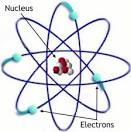
Electron |
Electron (chemistry) Electron discovered by J. J. Thomson. |
|
30 Nov 1896

Adolf Erik Nordenskiöld |
Adolf Erik Nordenskiöld (history of science) Adolf Erik Nordenskiöld publishes Periplus: An Essay on the Early History of Charts and Sailing Directions in Stockholm. |
|
30 Nov 1896

David Hilbert |
David Hilbert (mathematics) David Hilbert unifies the field of algebraic number theory with his treatise Zahlbericht. |
|
30 Nov 1896

Henri Brocard |
Henri Brocard (mathematics) Henri Brocard begins publication of his source book on geometric curves, Notes de Bibliographie des Courbes Géométriques, in Bar-le-Duc. |
|
30 Nov 1896

Danish |
Danish (medicine) Danish veterinarian Bernhard Bang isolates Brucella abortus as the agent of Brucellosis. |
|
30 Nov 1896

Epinephrine |
Epinephrine (medicine) Epinephrine discovered by John Jacob Abel. |
|
30 Nov 1896
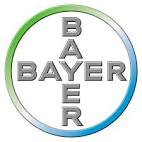
Bayer AG |
Bayer AG (medicine) Chemists working at Bayer AG create a synthetically altered version of salicin which the company names Aspirin. |
|
30 Nov 1896

L. Emmett Holt |
L. Emmett Holt (medicine) L. Emmett Holt publishes the standard textbook The Diseases of Infancy and Childhood in New York. |
|
30 Nov 1896

Émile Durkheim |
Émile Durkheim (psychology) Émile Durkheim publishes his classic study Le Suicide. |
|
30 Nov 1896
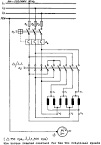
Dahlander pole changing motor |
Dahlander pole changing motor (technology) The Dahlander pole changing motor is patented. |
|
30 Nov 1896
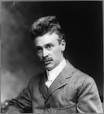
Hiram P. Maxim |
Hiram P. Maxim (technology) Hiram P. Maxim develops the muffler in conjunction with the firearm silencer (suppressor). |
|
30 Nov 1896
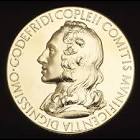
Copley Medal |
Copley Medal (awards) Copley Medal: Albert von Kölliker |
|
30 Nov 1896
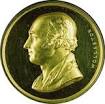
Wollaston Medal |
Wollaston Medal (awards) Wollaston Medal: Wilfred Hudleston |
|
25 Jan 1897

David Kirkaldy |
death David Kirkaldy David Kirkaldy (born 1820), Scottish-born engineer, pioneer of materials testing. |
|
02 Feb 1897

Ice-cream mold |
Ice-cream mold In 1897, a patent was issued for an ice-cream scoop invented by black American inventor, Alfred L. Cralle of Pittsburgh, Pennsylvania (No. 576,395). His design of an "Ice-cream Mold and Disher" was made to be strong and durable, effective, inexpensive, able to keep ice cream and other foods from sticking and easy to operate with one hand. It could be constructed in almost any desired shape, such as a cone or a mound, with no delicate parts that could break or malfunction. The basic design is so efficient that it is seen still in use today. |
|
05 Feb 1897

Indiana Pi Law |
Indiana Pi Law In 1897, the Indiana State House legislature passed Bill No.246 which in effect gave 3.2 exactly as the value of pi. It stated, in part, "the ratio of the diameter and circumference [pi] is as five-fourths to four." That is (4 divided by 5/4) = 16/5 = 3.2 exactly. It was introduced by Representative Taylor I. Record, a farmer and lumber merchant, on behalf of a mathematical hobbyist, Dr. Edwin J. Goodwin, M.D. Neither they, nor the House politicians, understood it was mathematically incorrect. That was shortly recognized by Clarence A. Waldo, mathematics professor at Purdue University, who advised the Indiana Senators. They indefinitely postponed the bill on 12 Feb 1897. Pi is, in fact, an irrational number, approx. 3.141592. |
|
19 Feb 1897
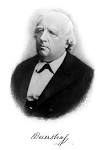
Karl Weierstrass |
death Karl Weierstrass Karl Weierstrass (born 1815), German mathematician. |
|
27 Feb 1897
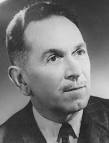
Bernard Lyot |
birth Bernard Lyot Born 27 Feb 1897; died 2 Apr 1952 at age 55. Bernard(-Ferdinand) Lyot was a French astronomer who invented the coronagraph (1930), an instrument which allows the observation of the solar corona when the Sun is not in eclipse. Earlier, using his expertise in optics, Lyot made a very sensitive polariscope to study polarization of light reflected from planets. Observing from the Pic du Midi Observatory, he determined that the lunar surface behaves like volcanic dust, that Mars has sandstorms, and other results on the atmospheres of the other planets. Modifications to his polarimeter created the coronagraph, with which he photographed the Sun's corona and its analyzed its spectrum. He found new spectral lines in the corona, and he made (1939) the first motion pictures of solar prominences. |
|
15 Mar 1897
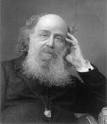
James Joseph Sylvester |
death James Joseph Sylvester James Joseph Sylvester (born 1814), English mathematician. |
|
24 Mar 1897
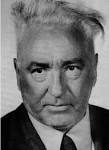
Wilhelm Reich |
birth Wilhelm Reich Wilhelm Reich (died 1957), psychoanalyst. |
|
12 Apr 1897

Edward Drinker Cope |
death Edward Drinker Cope Died 12 Apr 1897 at age 56 (born 28 Jul 1840). American paleontologist and prolific taxonomist of vertebrate paleontology. He was also active in ichthyology and herpetology. He was an evolutionist, and was one of the founders of the Neo- Lamarckian school of evolutionary thought. This school believed that changes in developmental (embryonic) timing, not natural selection, was the driving force of evolution. Cope thought that groups of species that shared similar developmental patterns could be grouped into more inclusive groups (i.e. genera, families, and so on). He led many natural history surveys in the American West for the precursors of the U.S. Geological Survey, making many important finds on his trips, including dinosaur discoveries in western North America. |
|
25 Apr 1897

John Chipman |
birth John Chipman Born 25 Apr 1897; died 14 May 1983 at age 86. American physical chemist and metallurgist who researched the role of oxygen in iron and steelmaking. Applying the theories of physical chemistry, he examined the reactions between slag and liquid iron and advanced the techniques of pig iron and steel production. From his work in the early 1930s at the University of Michigan, he began to establish an international reputation for his research on steel. He became a professor of process metallury at M.I.T. in 1937, and was the department head from 1946 until retirement in 1962. During WW II he took a leave of absence from 1943, to work for the Manhattan Project as chief of its metallurgy section, where he found a method to convert powdered unranium into soliod castings, thus providing researchers with a reliable alternate supply of castings when solid uranium was scarce. |
|
07 May 1897

Abraham Dee Bartlett |
death Abraham Dee Bartlett Abraham Dee Bartlett (born 1812), English zoologist. |
|
10 May 1897

Francis P. Shepard |
birth Francis P. Shepard Born 10 May 1897; died 25 Apr 1985 at age 87. Fraancis Parker Shepard was an American marine geologist who studied submarine canyons, coastal processes and features, submerged deltas, sea-level changes and continental shelves, all of which he preferred rather than deep-ocean geology. His work off the California coast near La Jolla pioneered Pacific marine geology. Although his early career began with the study of structural geology, with field trips in the Rocky Mountains leading to a Ph.D. in 1922. The next year, his father, head of Shepard Steamship Line and an avid sailor, offered the use of his yacht. Thereby, Shepard's lifetime interests shifted to marine geology. When the surface sediment samples he collected from the continental coast off the New England coast did not match what theory predicted, in 1932, he published his observations and offered new interpretations, even challenging existing ideas. |
|
13 May 1897
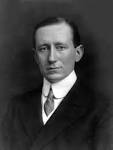
Guglielmo Marconi |
Guglielmo Marconi (technology) Guglielmo Marconi sends the first ever wireless communication over open sea when the message "Are you ready" is transmitted across the Bristol Channel from Lavernock Point in South Wales to Flat Holm Island, a distance of 6 kilometres (3.7 mi). |
|
17 May 1897

USS Holland (SS-1) |
USS Holland (SS-1) (technology) Launch of the Holland VI (later USS Holland (SS-1)), designed by John Philip Holland, at Lewis Nixon's Crescent Shipyard in Elizabeth, New Jersey; this is the first submarine having power to run submerged for any considerable distance, and the first to combine electric motors for submerged travel and gasoline (Otto) engines for use on the surface. |
|
29 May 1897
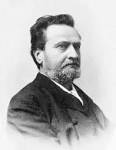
Julius von Sachs |
death Julius von Sachs Died 29 May 1897 at age 64 (born 2 Oct 1832). (Ferdinand Gustav) Julius von Sachs was a German botanist studying plant physiology, nutrition, and tropism (response to environmental stimuli). He discovered transpiration: that the absorbed water moves in tubes in the plant walls without the cooperation of living cells. In 1865, Sachs discovered chlorophyll, the green substance of plants; that it is located in special bodies within plant cells (later called chloroplasts); that glucose is made by the action of chlorophyll; and that the glucose is usually stored as starch. Sachs studied the formation of growth rings in trees, the role of tissue tension in promoting organ growth. He invented the clinostat to measure the effects of such external factors as light and gravity on the movement of growing plants. His work was a significant contribution to the knowledge of plant physiology during the second half of the 19th century. |
|
22 Jun 1897

Norbert Elias |
birth Norbert Elias Born 22 Jun 1897; died 1 Aug 1990 at age 93. quotes German sociologist. |
|
26 Jun 1897

British |
British (technology) At the British Fleet Review, Charles Parsons gives a spectacular display of the unprecedented speed attainable by his steam turbine-powered Turbinia. |
|
03 Jul 1897

Jesse Douglas |
birth Jesse Douglas Born 3 Jul 1897; died 7 Oct 1965 at age 68. American mathematician who was awarded one of the first two Fields Medals in 1936 for solving the Plateau problem. which had first been posed by the Italian-French mathematician Joseph-Louis Lagrange in 1760. The Plateau problem is one of finding the surface with minimal area determined by a fixed boundary. Experiments (1849) by the Belgian physicist Joseph Plateau demonstrated that the minimal surface can be obtained by immersing a wire frame, representing the boundaries, into soapy water. Douglas developed what is now called the Douglas functional, so that by minimizing this functional he could prove the existence of the solution to the Plateau problem. Douglas later developed an interest in group theory. |
|
13 Jul 1897

Marconi patent |
Marconi patent In 1897, Guglielmo Marconi received a U.S. patent for a wireless telegraph (No. 586,193). |
|
20 Jul 1897

Tadeus Reichstein |
birth Tadeus Reichstein Tadeus Reichstein (died 1996), Nobel Prize-winning chemist. |
|
10 Aug 1897

Rudolf Diesel |
Rudolf Diesel (technology) Rudolf Diesel builds his first working prototype Diesel engine in Augsburg. |
|
12 Aug 1897
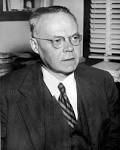
Otto Struve |
birth Otto Struve Otto Struve (died 1963), astronomer. |
|
20 Aug 1897
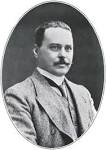
Ronald Ross |
Ronald Ross (medicine) Ronald Ross discovers the malaria Plasmodium in an Anopheles mosquito, demonstrating the transmission mechanism for the disease. |
|
27 Aug 1897

Eduard von Hofmann |
death Eduard von Hofmann Eduard von Hofmann (born 1837), Austrian forensic pathologist. |
|
12 Sep 1897

Irène Joliot-Curie |
birth Irène Joliot-Curie Irène Joliot-Curie (died 1956), scientist. |
|
19 Oct 1897

George Pullman |
death George Pullman George Pullman (born 1831), American inventor. |
|
31 Oct 1897

Samuel Haughton |
death Samuel Haughton Samuel Haughton (born 1821), Irish scientific polymath. |
|
04 Nov 1897

C. B. van Niel |
birth C. B. van Niel C. B. van Niel (died 1985), microbiologist. |
|
13 Nov 1897

Tilly Edinger |
birth Tilly Edinger Tilly Edinger (died 1967), paleoneurologist. |
|
30 Nov 1897

Black American patent |
Black American patent In 1897, a U.S. patent for a "Device for Rolling Cigarettes" was issued to black American inventor J.A. Sweeting (No. 594,501). A concave mantrel would carry tobacco while cigarette paper from a contained roll was turned around the contents, thus producing a perfectly and conveniently formed cigarette. By wetting a strip of the paper along the line of the roller with a finger, further turning of the mantrel would apply tension and separate the paper in a straight line. The wetted portion in contact with the formed cigarette wrapper would adhere to it and prevent unwinding of the wrapper. |